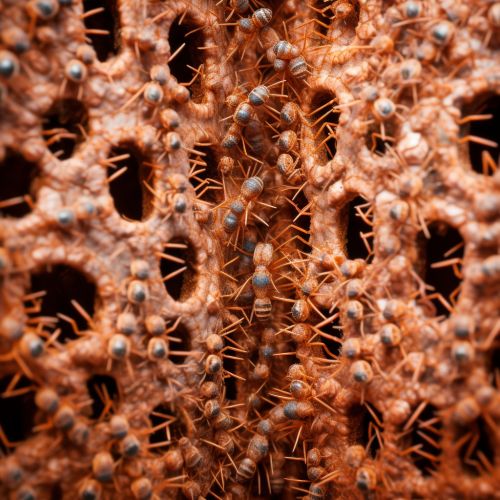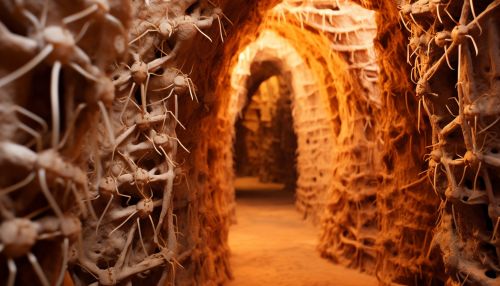Isoptera
Taxonomy and Evolution
Isoptera, commonly known as termites, belong to the order of eusocial insects that are particularly prevalent in the tropics. The name "Isoptera" is derived from the Greek words "iso-", meaning equal, and "-ptera", meaning wings, referring to the fact that the front and back wings of reproductive termites are of the same size and shapeEtymology of Termites.
The Isoptera order is classified within the Insect class and further divided into multiple families, including Rhinotermitidae, Termitidae, and Mastotermitidae, among others. Each family is characterized by unique morphological and behavioral traits that distinguish them from one another.
The evolution of Isoptera is a topic of ongoing research. Fossil evidence suggests that termites have existed since the Mesozoic Era, approximately 200 million years ago. Some theories propose that termites share a common ancestor with the wood-eating cockroaches of the genus CryptocercusEvolution of Cockroaches.


Morphology
Termites exhibit a high degree of morphological diversity, primarily due to their caste system. The Isoptera order is characterized by a eusocial structure, consisting of a reproductive pair (the king and queen), soldiers, and workers.
The queen is the largest member of the colony, with some species' queens reaching lengths of up to 10 centimeters. The king, while smaller than the queen, is larger than the soldiers and workers. Soldiers are distinguished by their large, often darkened heads and powerful mandibles, which they use for colony defense. Workers, the smallest members of the colony, are responsible for foraging, nest maintenance, and care of the young.
Behavior and Ecology
Termites are known for their complex social structures and cooperative behaviors. They live in colonies that can range from a few hundred to several million individuals. These colonies are usually located in the ground, in wood, or in man-made structures.
Termites are detritivores, feeding primarily on dead plant material, usually in the form of wood, leaf litter, or soil. Their ability to break down cellulose, a complex carbohydrate found in plant cell walls, is facilitated by symbiotic protozoa and bacteria in their gut. This allows them to extract nutrients from materials that are indigestible to many other organisms.
Termite colonies are often associated with mounds, which are constructed by workers using a combination of soil, saliva, and feces. These mounds can reach impressive heights and are a testament to the architectural abilities of these insects.
Human Interaction
Termites have a significant impact on human activities. On one hand, they play a crucial role in nutrient cycling and soil formation, contributing to ecosystem health and productivity. On the other hand, they are considered pests in many parts of the world due to their ability to cause extensive damage to wooden structures.
Control methods for termites include physical barriers, chemical treatments, and biological control agents. However, the effectiveness of these methods can vary greatly depending on the species of termite and the specific conditions of the infestation.
